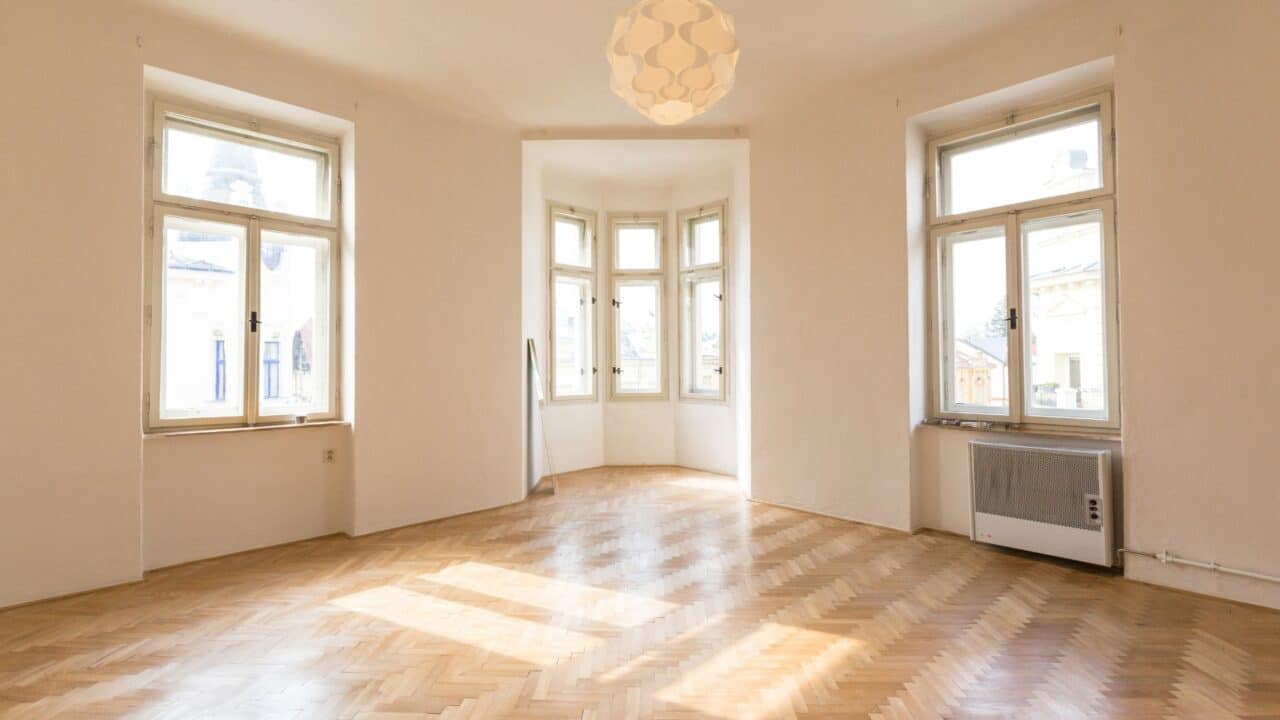Key Takeaway
Painting before moving in is one of the smartest decisions a homeowner can make. Empty homes are faster, cheaper, and safer to paint because there’s no furniture to move or protect. You’ll save on labor costs, avoid the risk of drips or splatters on your belongings, and achieve a smoother, more professional finish.
Why Painting an Empty Home Is Easier
An empty room gives painters a true blank canvas. Without furniture in the way, ladders can be placed anywhere, rollers can run full strokes across the walls, and trim lines can be cut in cleanly. Preparation is also dramatically reduced. Instead of covering every couch, dresser, and table, all that’s needed is to protect the floors and remove outlet covers.
By comparison, painting in a furnished space requires moving heavy furniture into the center of the room. Additionally, it involves draping everything with plastic or canvas and constantly working around obstacles. Not only does this add hours of work, it also raises the chance of accidents. Even with careful protection, it only takes one slip of a roller or a piece of tape peeling back for paint to end up on something valuable.
Cost and Time Advantages
The time savings of painting before move-in are substantial. Professionals often estimate that empty rooms can be finished in 30 to 40 percent less time than furnished ones. Since painters typically charge by the hour or by room, that efficiency translates directly into lower costs. For example, if a crew normally spends ten hours painting a set of rooms, an empty house might only take six or seven. That’s several hours of labor you don’t have to pay for.
For DIY homeowners, the savings come in energy and frustration. Instead of wrestling drop cloths behind a sectional sofa or inching a ladder into a crowded bedroom, you can work freely and finish rooms much more quickly. What might have stretched into a week of after-work projects can often be knocked out in a weekend.
Protecting Your Investment
Paint is one of the least expensive ways to improve a home’s value, but the return is only as good as the finish. Trying to paint around furniture almost always leads to shortcuts. For example, sections behind wardrobes or headboards often get skipped. Trim lines end up uneven, and drips are more likely when you’re working in cramped spaces. Worse yet, if paint ends up on furniture or rugs, the cost of that mistake can outweigh the savings of painting in the first place.
By painting before moving in, you set the stage properly. Walls and ceilings get an even, professional-looking finish, and furniture arrives to a fresh, flawless backdrop. The result feels cleaner, brighter, and far more move-in ready.
The Smart Sequence for a New Home
If you’re painting before move-in, the smartest approach is to work from the top down. Ceilings should be painted first so that any drips can be covered when walls are finished. Trim and doors come next, since they require precision work with ladders and brushes. Walls are left for last, giving you one smooth, continuous finish. Once painting is done, allow at least 24 to 48 hours for the paint to cure fully before bringing in furniture or hanging art. This order ensures efficiency while protecting the quality of the final result.
What If You Can’t Paint Before Moving In?
Sometimes schedules don’t line up, and painting has to wait until after move-in. In that case, the best strategy is to move furniture to the center of each room and cover it with heavy canvas drop cloths. Work in one room at a time to limit disruption, and if possible, start with ceilings and trim so you aren’t balancing ladders around beds and tables later. Expect the project to take longer than it would in an empty space, and be patient with the extra prep.
FAQ
Q: Does Colin Can Help paint houses to prepare them for sale?
Absolutely! We love to be able to help you prep a home for sale or make a new home your own with full repaints, room repaints, and however else we can assist.
Q: What if I can’t paint until after I’ve moved in?
It’s still possible — just slower. Furniture will need to be moved and carefully covered, and the work will stretch out more than if the rooms were empty.
Q: Does painting before moving in really save money?
Yes. Professionals spend less time on setup and maneuvering, which lowers labor costs. Homeowners doing the work themselves save on supplies and avoid the risk of damaging belongings.
Q: Should ceilings and trim be painted before furniture arrives too?
Definitely. Ceilings and trim often require ladders and precision, and it’s far easier to get clean lines without furniture in the way.
Q: How soon after painting can movers bring furniture in?
Most latex paints are dry to the touch in a few hours. However, they need at least 24 to 48 hours to cure. Waiting ensures you don’t accidentally smudge the finish or press furniture marks into fresh walls.
Q: Is it worth repainting before selling a house, even if the old paint looks fine?
Almost always. Fresh, neutral paint appeals to buyers, makes listing photos look sharper, and helps a home feel cared-for and move-in ready.

